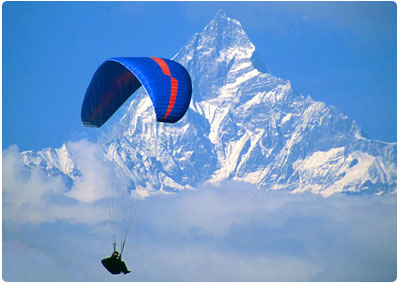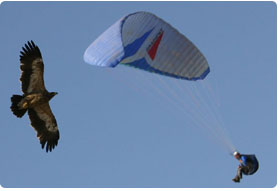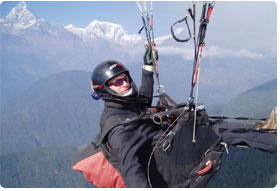Few people trek around the Kathmandu valley. Yet it offers a rich insight into the lives, history, culture and religion, together with the daily toil in the fields of its inhabitants. The valley rim lies around 1000/ 2800 m and in the spring offers early flowering rhododendrons and through the autumn and winter, wonderful mountain vistas which can, from certain view-points, stretch from Everest in the east to Annapurna in the west.
DAY 01 : ARRIVE IN KATHMANDUWhen you arrive in Kathmandu, you'll be taken to your hotel. While in Kathmandu you will have time fascinating Buddhist and Hindu temples and shrines reflecting ancient local traditions are highlighted on our guided tour. There's time to explore the city's many charms on your own too. O/N in Kathmandu.
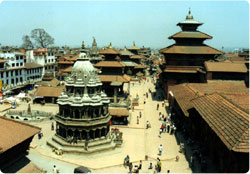
DAY 02 : KATHMANDU - CHISOPANIAfter breakfast driver to Sundarijal (Trekking Starting point) and trek to Chisopani (2194m). Chisopani is very good for walking through the forest and along the ridge with spectacular views of Annapurna, Manaslu, Ganesh Himal, Langtang and Jugal Himal which is offer outstanding views of the Himalaya and overnight camping in Chisopani.
DAY 03 : CHISAPANI - NAGARKOTWalk between the village and forest, continue our journey to Nagarkot 2300m above the sea-level. This spot provides an excellent view of the sunset and Mount Everest can be seen on a clear day. O/N camping in Nagarkot.
DAY 04 : NAGARKOT - KATHMANDUWe'll awake early to watch the spectacular dawn, the first rays of the sun firing the peaks a hellist red slowly lighting up the Himalayas from Kachenjunga and Everest in the far East of Annapurna and Dwalagiri in the West. Travel to Dhulikhel. Afternoon, we'll drive back to Kathmandu. O/N in Kathmandu.
DAY 05 : KATHMANDU - RAFTING - CHITWAN NATIONAL PARKAfter breakfast drive to rafting site (Trisuli River for White water Rafting) It takes approximately 2 hrs drive from KATHMANDU. This River is popular as access to the Prithivi Highway makes "breaking off" the journey easy. Trisuli River is also an ideal
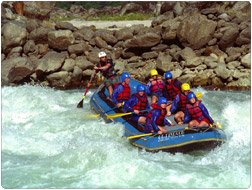 beginner's River . Lunch we'll be served after 3/4 hrs rafting in the riverside. After lunch, drive to Chitwan National Park upon arrival, rooms assigned and there will be a short briefing on the program and our facilities. 4:00 PM: Elephant-back safari: Guests will ride on an elephant to explore the jungle and wildlife you will be able to see the one-horned rhinoceros, several types of deer, monkeys, wild boar, bison, sloth bear, leopard and, if lucky, the Royal Bengal tiger. This exciting ride lasts for 2-3 hours. 7:00 PM: Dinner in the central dining hall.
beginner's River . Lunch we'll be served after 3/4 hrs rafting in the riverside. After lunch, drive to Chitwan National Park upon arrival, rooms assigned and there will be a short briefing on the program and our facilities. 4:00 PM: Elephant-back safari: Guests will ride on an elephant to explore the jungle and wildlife you will be able to see the one-horned rhinoceros, several types of deer, monkeys, wild boar, bison, sloth bear, leopard and, if lucky, the Royal Bengal tiger. This exciting ride lasts for 2-3 hours. 7:00 PM: Dinner in the central dining hall.DAY 06 : Chitwan National Park5:30 AM: Wake-up call followed by tea or coffee, then proceed on a Nature Walk. This encounter on foot with the environment will introduce the main features of eastern Chitwan. Sal forest, open grassland and reverie jungle. Our guides will help you identify some species of birds, plants and other wildlife that you may encounter. 8:30 AM: Breakfast 9:30 AM: Elephant briefing program: Learn more about these fascinating animals during a visit to our elephant stable. (For the brave ones there is even a crash course in riding and leading the elephants) 1.00 PM: LUNCH. After lunch , Canoeing : A traditional dug-out canoe takes you on a silent trip down the Rapti river to view aquatic birds and the animals of the river banks. Back to resort through the Jungle. 7:00 PM: Tharu Stick dance: Farmers of the nearby villages will show some of their traditional skills and dances. 8:00 PM: Dinner around the camp firing.
DAY 07 : Chitwan National Park - POKHARA5.30 AM: Bird Watching (or another elephant ride) after early morning tea/coffee.8.00 AM: Breakfast9.00 AM: Luggage down and departure at 9.39 AM. To Pokhara. The actual program for your stay, will be given to you on arrival at Resort / camp. The activities are adjusted to the season and weather conditions. Naturally, it may not always be possible to follow this schedule to the minute and the circumstances may force us to alter the program at short notice. On safari in the jungle you will be accompanied by expert naturalists who will advise on safety procedures and we request you to respect their judgment at all times. If you wish to stroll in the forest alone, a guide will have to accompany you for your safety. O/N in Kathmandu.
DAY 08 : POKHARA CITY TOURAfter breakfast we've sightseeing around Pokhara valley. Pokhara lakeside villages sits, "front row center" to one of the most beautiful Himalayan panoramas in the world. The Annapurna and famous "Fishtail" mountain peak of Machapuchhare tower over the tropical setting of Pokhara and you spend there will be the scenic highlight of your trip. You're free in Pokhara Valley also called "Magic Land" or Dreamland" of Nepal, to explore the various interesting place like a boating in Fewa lake over looking the region of Annapurna Areas, David Falls, Mahendra Cave and some Temples. Evening you're free to explore the colorful town. O/N in Pokhara.
DAY 09 : POKHARA - KATHMANDUAfter breakfast you're return to Kathmandu by road. After arrive in Kathmandu you're free to shop and pick up some last minute souvenirs, rest and visit the shop etc.. O/N in Kathmandu.
DAY 10 : DEPARTUREAfter breakfast free for you until time to leave the international airport for your final destination.
